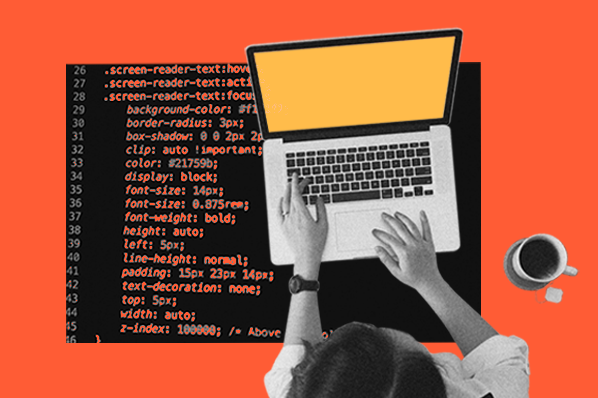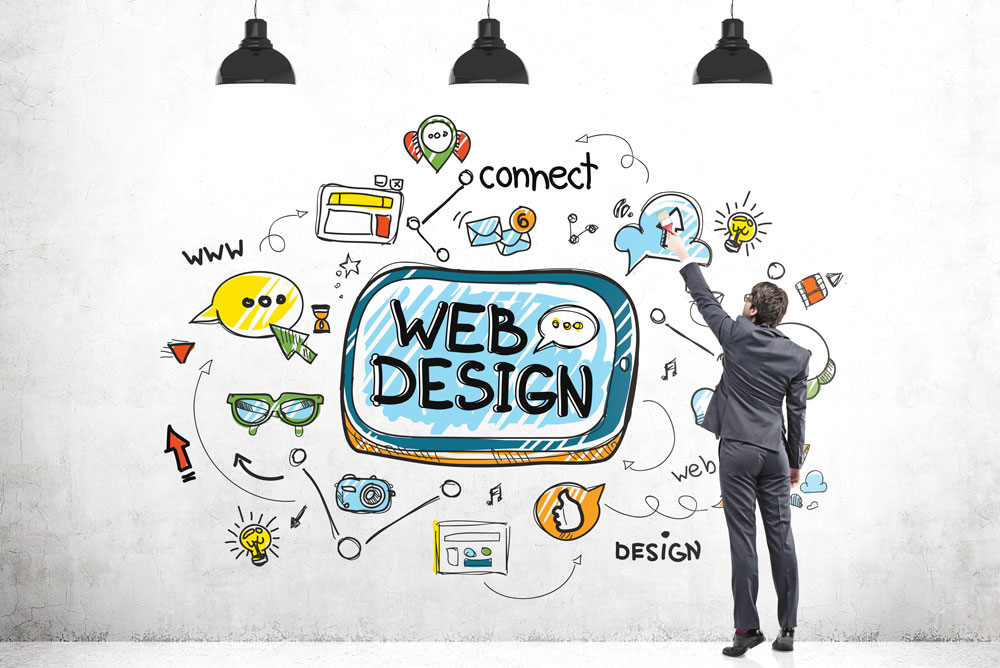The Comprehensive Overview to Crafting Aesthetically Appealing and Functional Website Design That Satisfies User Demands
In today's digital landscape, the significance of crafting internet layouts that are both useful and aesthetically enticing can not be overstated. By prioritizing user-centered style concepts, designers can produce experiences that not just bring in yet likewise keep customer passion - web design.
Recognizing User-Centered Design
At the heart of effective website design lies the concept of user-centered design, an approach that focuses on the requirements, choices, and habits of individuals throughout the growth process. This approach includes detailed study to comprehend the target audience, making certain that the end product reverberates with its desired individuals. By incorporating user responses at every phase, developers can produce user interfaces that are not only visually appealing yet intuitive and also functional.
User-centered design highlights empathy, calling for developers to tip into the customers' shoes and consider their point of views. Methods such as individual personalities, trip mapping, and use screening are used to identify pain factors and possibilities for enhancement. This iterative process enables consistent refinement, as designers adapt to progressing customer requirements and technological developments.
Integrating user-centered layout causes increased customer complete satisfaction and engagement, ultimately leading to greater conversion prices and brand name commitment. It cultivates a joint atmosphere where stakeholders, consisting of designers, designers, and individuals, interact to accomplish a common vision. By placing users at the leading edge of the style process, organizations can produce websites that not just satisfy service objectives yet likewise supply satisfying and purposeful experiences for customers.
Secret Principles of Visual Layout
Reliable aesthetic style functions as the structure for developing appealing and easy to use websites. It includes a number of key principles that lead developers in crafting cosmetically pleasing and useful interfaces.
First, equilibrium plays an essential duty in attaining visual consistency. Developers need to disperse components uniformly across the design to prevent overwhelming users. This can be attained through asymmetrical or balanced layout strategies.
Next, contrast boosts readability and draws focus to important aspects. By utilizing varying dimensions, forms, or shades, designers can create prime focus that assist individuals via the content.
Additionally, positioning is important for arranging details. Constant alignment of text and photos promotes a clean design, improving general navigating and customer experience.
Closeness additionally adds to visual quality. Organizing relevant items with each other help individuals in recognizing the partnership in between various elements, making the user interface a lot more user-friendly.
Finally, consistency in layout aspects, such as designs, typefaces, and colors, reinforces brand name identity and aids customers browse the site more easily. By including these vital concepts of aesthetic design, web designers can create user interfaces that are not just visually enticing but user-centered and also practical.
Relevance of Responsive Style
Responsive style is an essential aspect of modern internet growth, making certain that web sites operate seamlessly throughout a variety of gadgets and screen sizes. As the internet landscape advances, the diversity of devicesâEUR" varying from mobile phones to tablets and desktop computer computersâEUR" demands a design technique that suits all customers.
Executing receptive design enables for an adaptable design that automatically adjusts based upon the individual's screen measurements. This flexibility not just enhances availability but also improves use, as users can interact and browse with the site effortlessly, no matter their device.

In addition, receptive design decreases the demand for keeping numerous versions of an internet site, improving updates and material management. This efficiency translates into expense savings and an extra natural brand experience throughout systems.
Enhancing User Experience
Customer Learn More Here experience (UX) is a crucial part of website design, influencing how site visitors communicate with an internet site and view its worth. A well-crafted UX makes certain that individuals can navigate intuitively, discover information quickly, and attain their objectives effectively. The layout has to think about the individual's trip, from the moment they land on the website to the conclusion of their preferred activity, whether that be making a purchase, authorizing up for a newsletter, or accessing details.
Trick elements that improve UX consist of clear navigation, responsive formats, and appealing aesthetic content. Consistency in design components such as fonts, buttons, and colors promotes familiarity, making the website feel cohesive. In addition, maximizing load times is essential; customers are much less likely to remain on a website that is slow-moving to respond.

Checking and Iterating Layouts
Checking and iterating layouts are fundamental procedures that comply with the first creation of a web site, guaranteeing that the user experience continues to be at the forefront of any kind of adjustments. These stages involve gathering customer responses, analyzing layout performance, and making notified alterations to boost usability and involvement.
Efficient screening can take various types, including usability testing, A/B testing, and individual surveys. Functionality screening allows developers go to the website to observe genuine individuals as they communicate with the site, determining discomfort points and areas for enhancement - web design. A/B screening, on the other hand, compares two versions of a style aspect to identify which carries out better, offering quantifiable data to guide decisions. Customer surveys can offer qualitative insights, recording customer sentiments and choices.
Continuous iteration fosters an adaptive design technique, where the web site develops in reaction to individual habits and responses. By dedicating to strenuous testing and model, developers can create a website that not just meets aesthetic standards however additionally delivers a delightful and seamless customer experience.

Verdict
Finally, effective web style necessitates the assimilation of user-centered concepts, key visual layout elements, and receptive frameworks to produce appealing user interfaces. By prioritizing individual needs and carrying out constant testing and version, designers can improve their creations to improve overall complete satisfaction. The commitment to these methods not just promotes a visually appealing aesthetic yet likewise makes sure functionality across varied gadgets, inevitably adding to a positive user experience and increased involvement.
By focusing on user-centered design principles, designers can produce experiences that not just draw in yet additionally preserve user rate of interest.At the heart of effective internet style lies the principle of user-centered design, an ideology that focuses on the demands, preferences, and actions of customers throughout the development process. By putting individuals at the center of the layout procedure, companies can produce web sites that not only satisfy company goals but additionally supply significant and fulfilling experiences for individuals.
By focusing on individual requirements and choices, internet designers can develop experiences that are not just visually enticing yet additionally functional, eventually cultivating user complete you could try here satisfaction and loyalty.
User surveys can provide qualitative insights, recording user views and preferences.